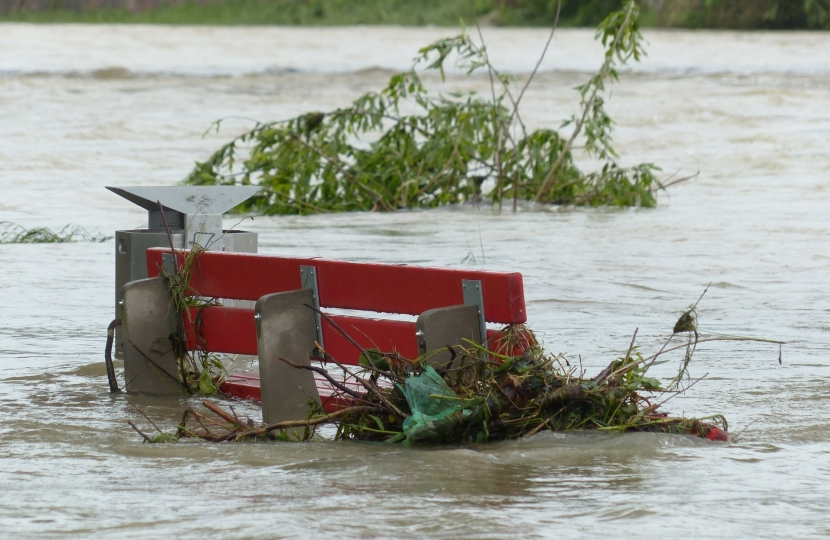
As this winter may be milder and wetter than normal, Conservative led Wiltshire Council is advising residents in the county to be prepared for a potentially increased risk of flooding.
Wiltshire has an underlying bedrock of chalk which makes it more susceptible to groundwater flooding, with the Salisbury Plain and Cranborne Chase areas particularly at risk. Flooding from groundwater happens when the level of water within the rock or soil that makes up the land surface (commonly known as the water table) rises. Although there is not expected to be an immediate risk of groundwater flooding, it is important that residents are prepared.
Groundwater flooding usually occurs days or weeks after heavy or prolonged rainfall and can often last several weeks. The water does not always appear where it would be expected - it can enter buildings by rising through floors rather than through doors. Groundwater flooding does not usually pose a risk to life but can cause significant damage to property.
Surface water flooding is caused when the volume of rainwater overwhelms existing drainage systems and doesn't soak into the ground but lies on or flows over the ground instead. This type of flooding is usually short lived and associated with heavy downpours of rain or thunderstorms; it can cause severe flooding to property and roads within a very short space of time with very little warning.
The council works closely with the Environment Agency, and town and parish councils to ensure communities are as resilient as possible when dealing with potential flooding, and to help them prepare effectively.
Conservative Cllr Dr Mark McClelland, Cabinet Member for Flooding, said:
Prolonged periods of heavy rainfall this winter may see the Environment Agency issue flood alerts across the county. If this happens, anyone in a higher risk area needs to be vigilant and aware of the potential for flooding.
We would advise residents to sign up for Environment Agency flood alerts and know what to do in the event of flooding emergencies. We have an excellent tool that residents can also use to report weather emergencies to us in the form of the MyWilts app.
Many Wiltshire parishes have active flood wardens, who will help to create and maintain parish's flood plans, listing areas of high risk within the parish, and can access flood prevention equipment such as sandbags and pumps.
Wiltshire also has two operational flood working groups, one in the north and one in the south of the county. These groups meet bi-monthly and consist of multi-agency groups including Wessex Water, Thames Water, Highways England, Network Rail and the Environment Agency. Focus is on building efficient responses to flooding issues, drainage and surface water issues and to utilise resources and funding appropriately.
Residents can follow simple tips to try and help flood prevention and reduce damage from surface water. Leaves for example, are a contributor leading from clogged gutters and drains, so people should ensure that the gutters and drainage downspouts are cleared regularly to prevent build up. Other helpful ideas include making a family flood or emergency plan so that everyone knows what to do in the event of flooding, storing all important/valuable documentation and sentimental items upstairs or in a watertight container or signing up for Met Office weather warnings.
In Salisbury, work is under way on the Salisbury River Park scheme to reduce the flood risk to parts of the city centre alongside the regeneration of the Maltings and Central Car Park area. Part of this project will provide key flooding infrastructure to protect around 350 homes and businesses in the area.
To find your parish's flood plan, search your parish council's website; or to sign up for general and river flood alerts, go to Sign up for flood warnings;
To report any flooding or weather emergencies use the MyWilts website: Wiltshire Council Booking and Reporting
To view more useful tips visit: https://nationalfloodforum.org.uk/


